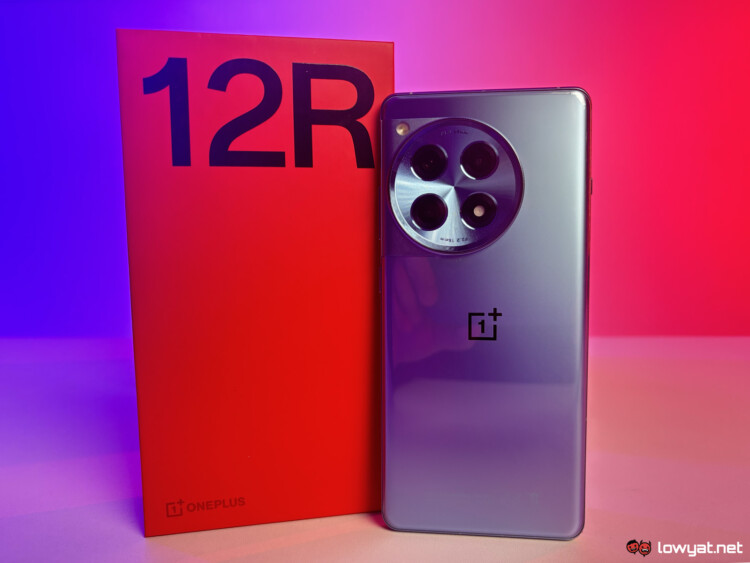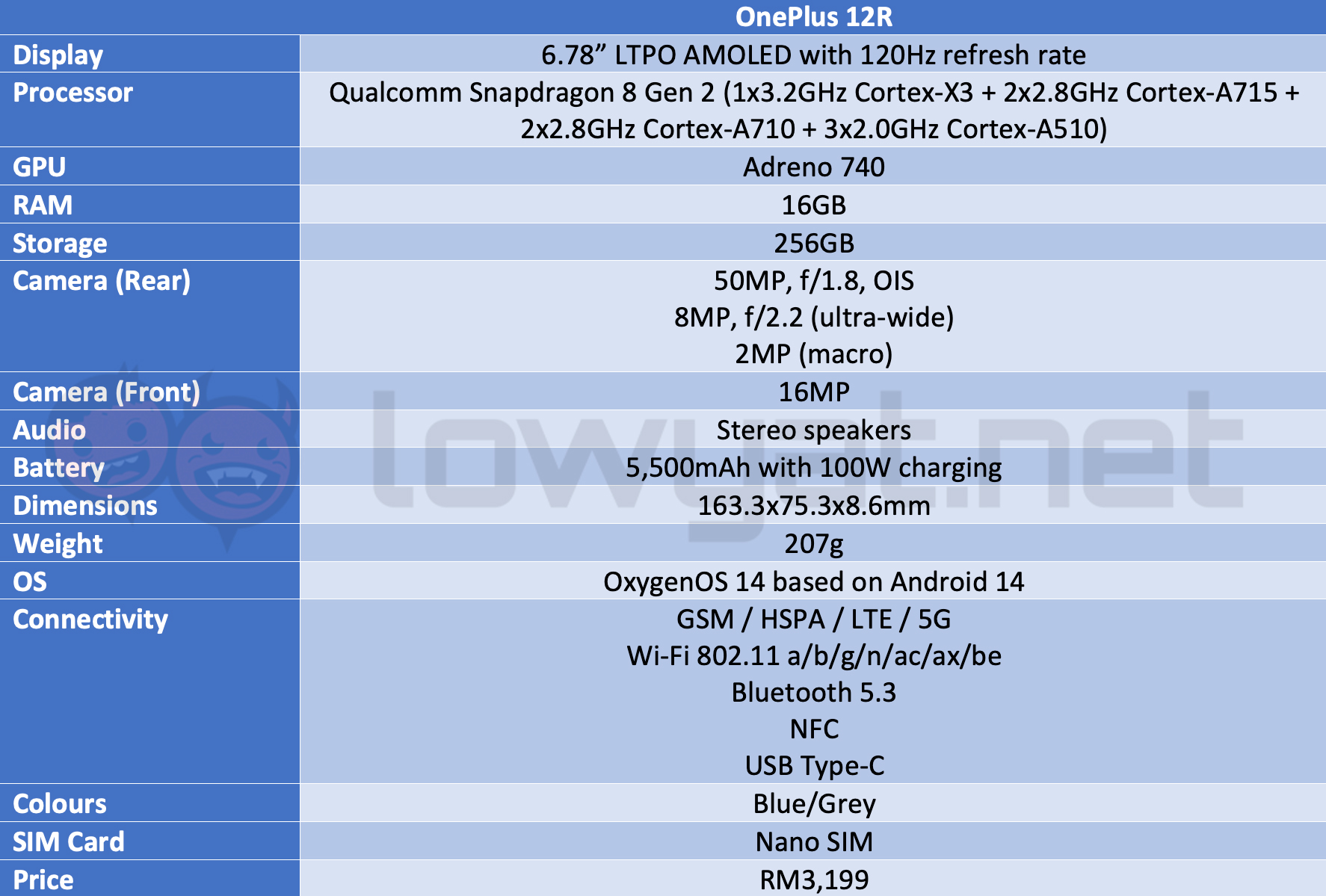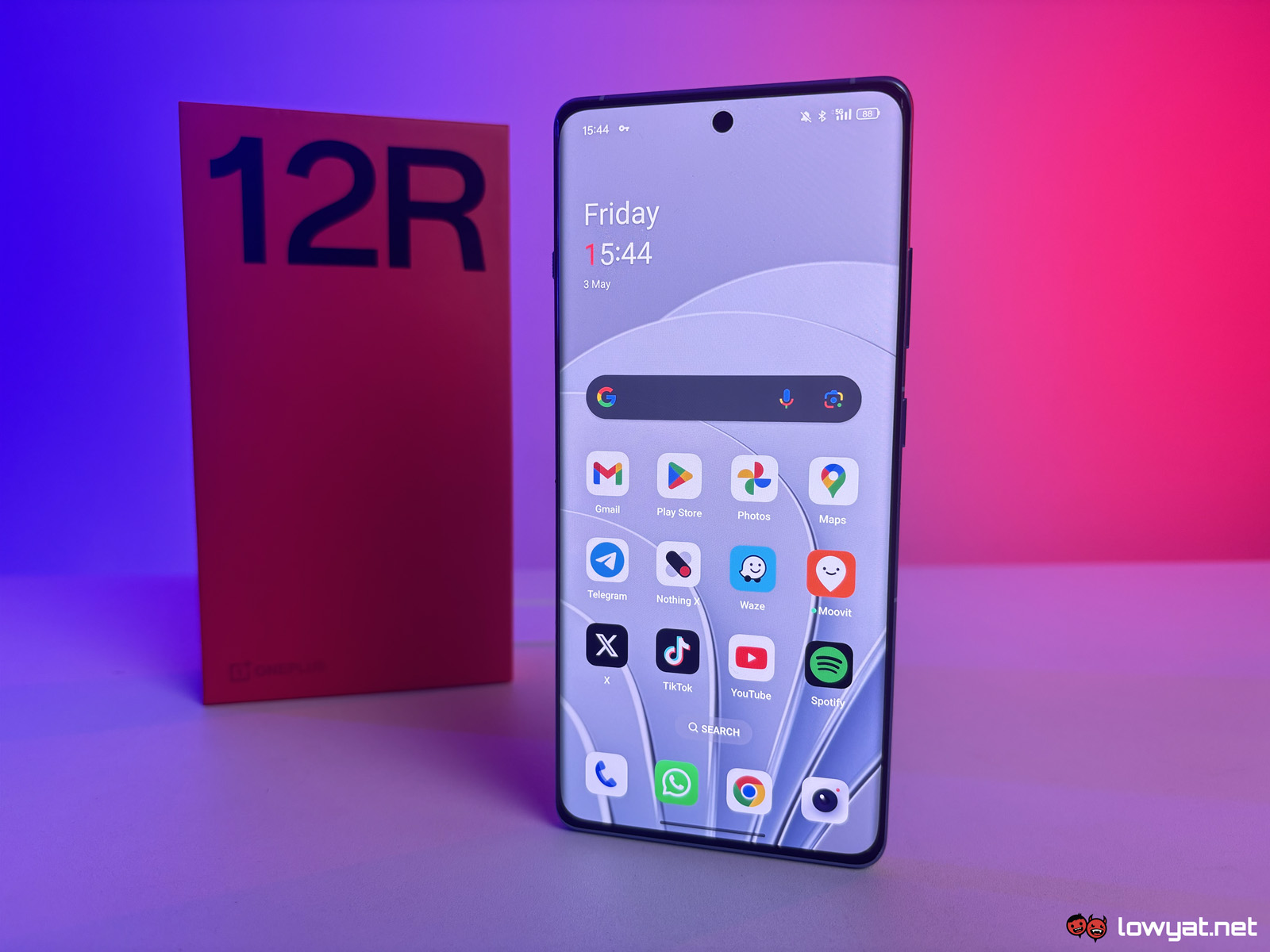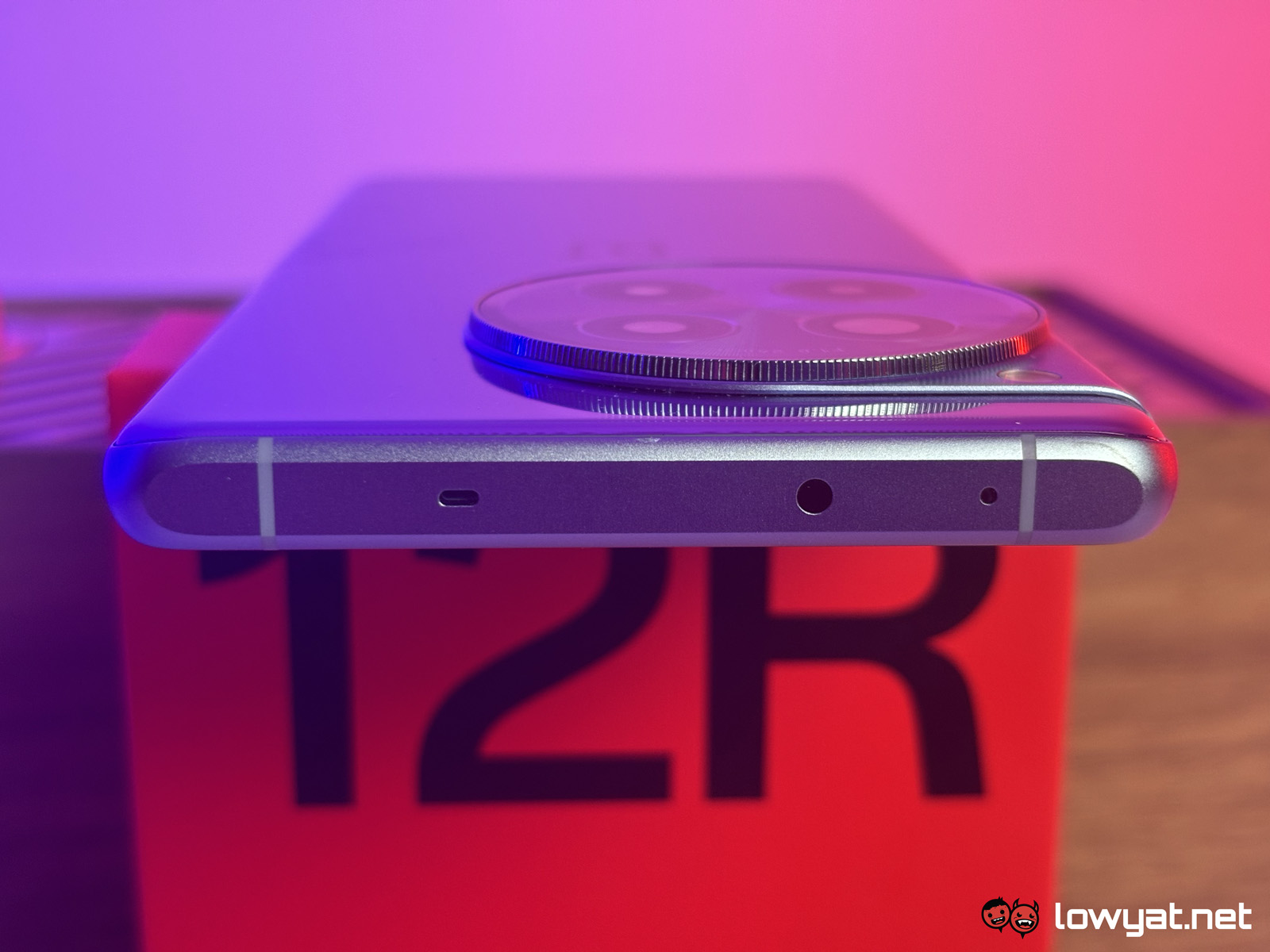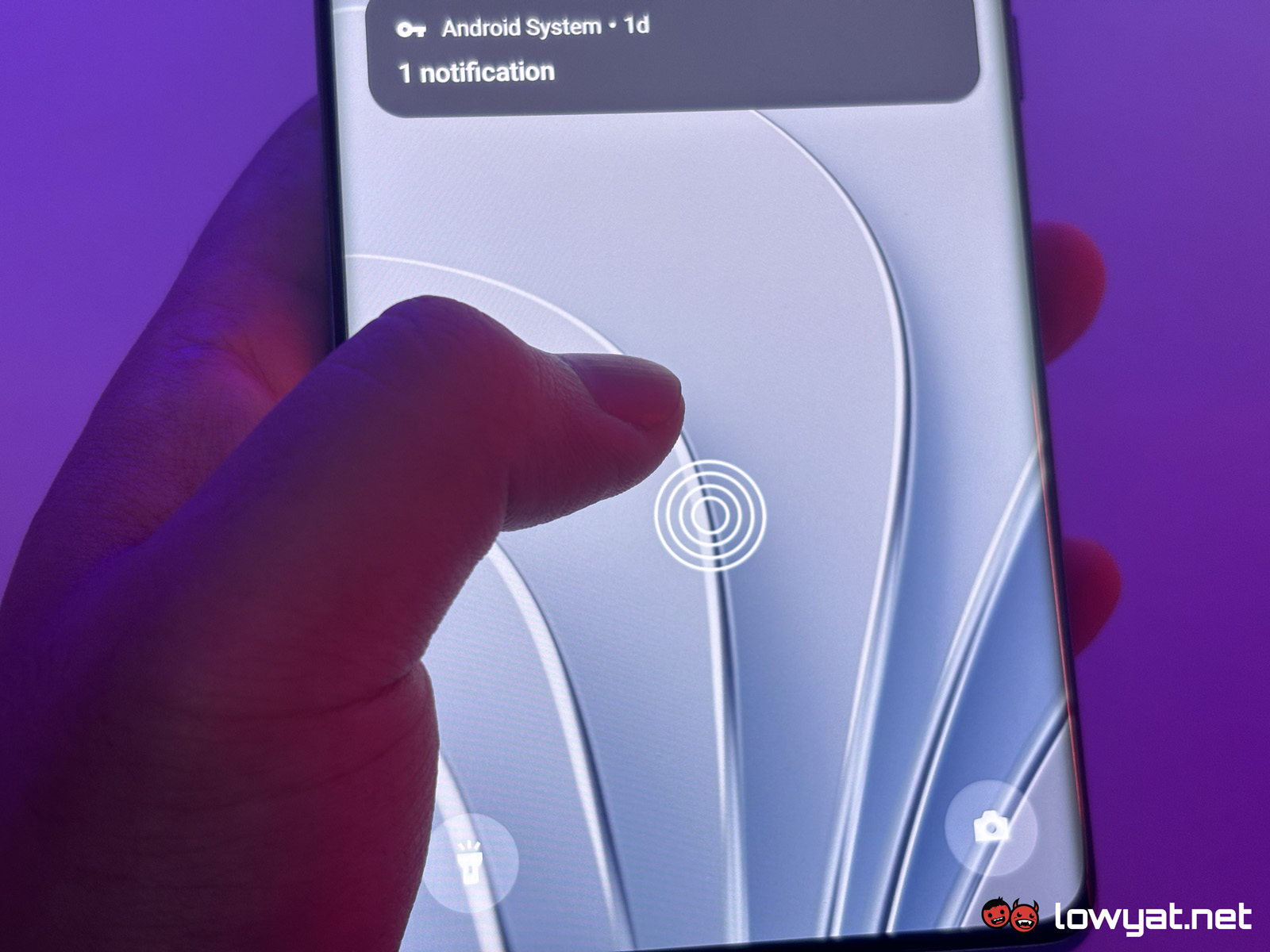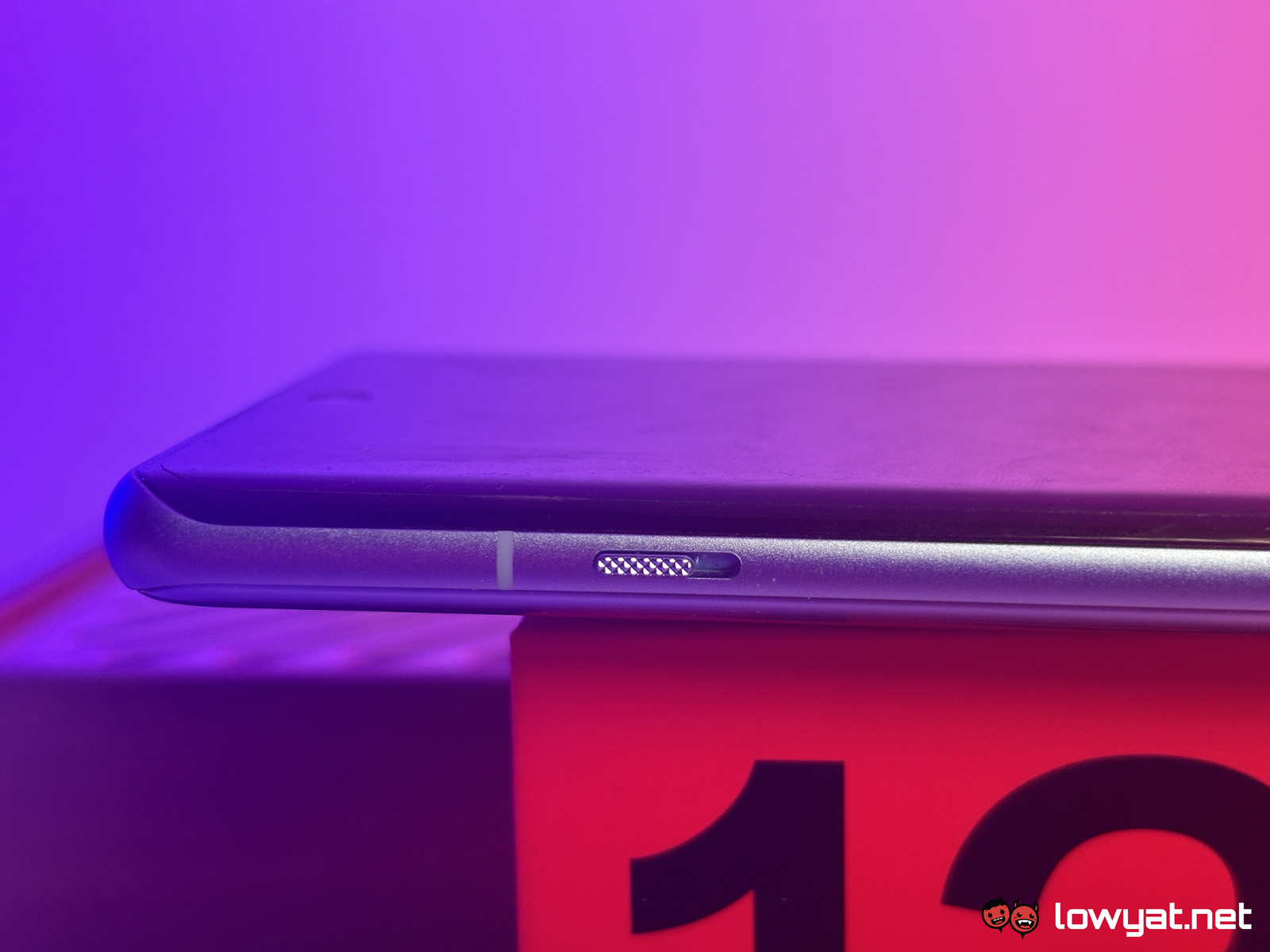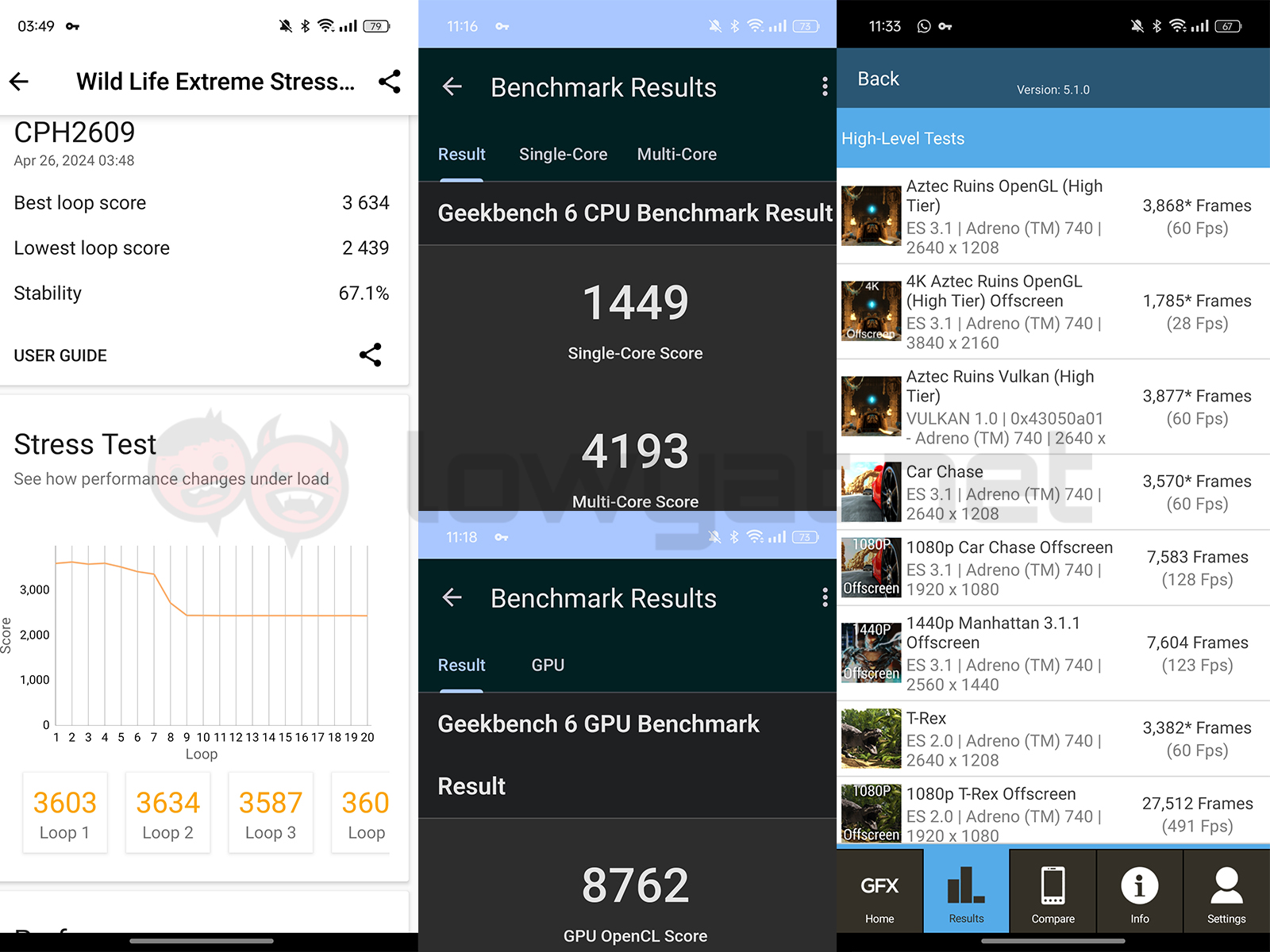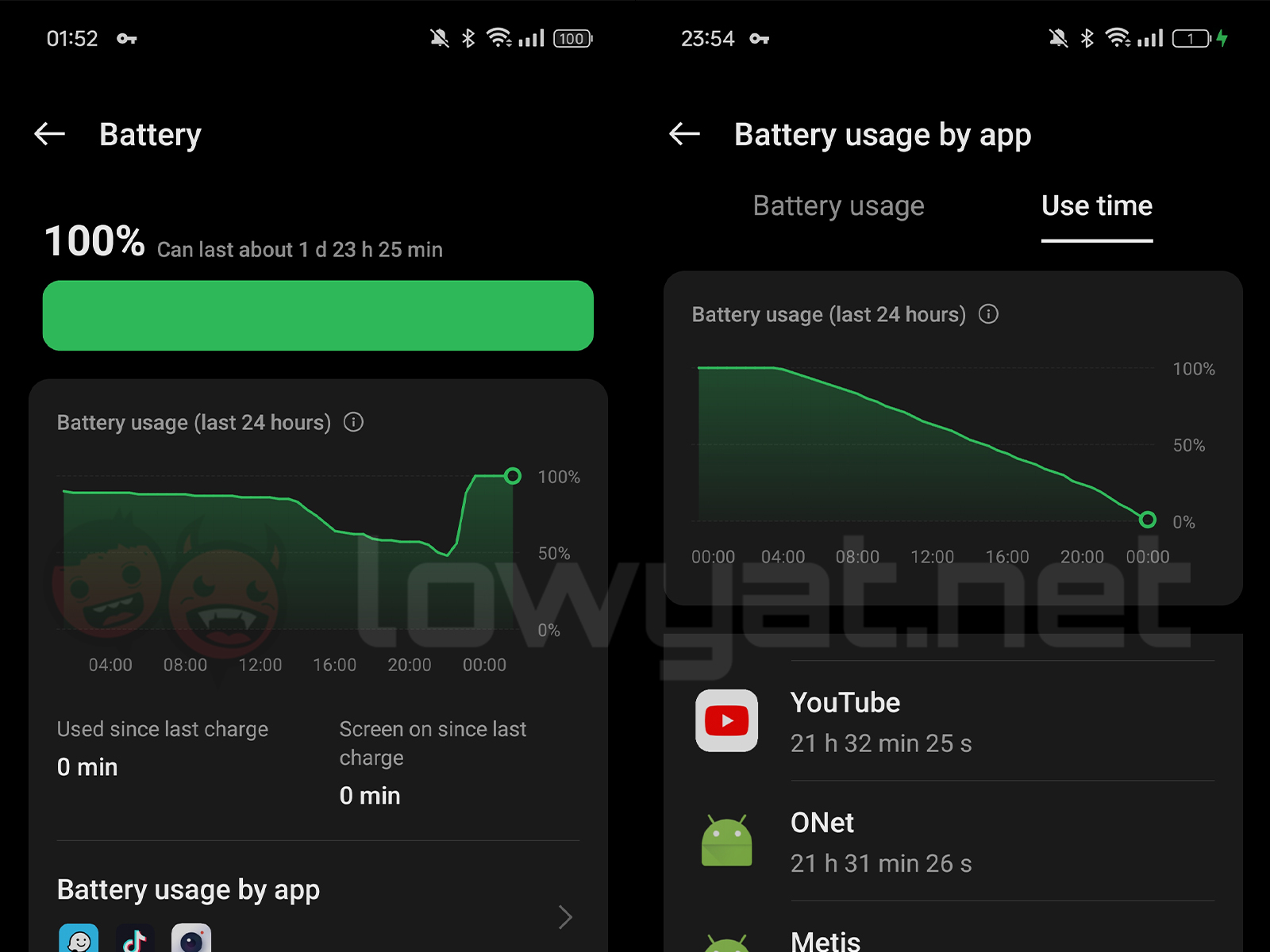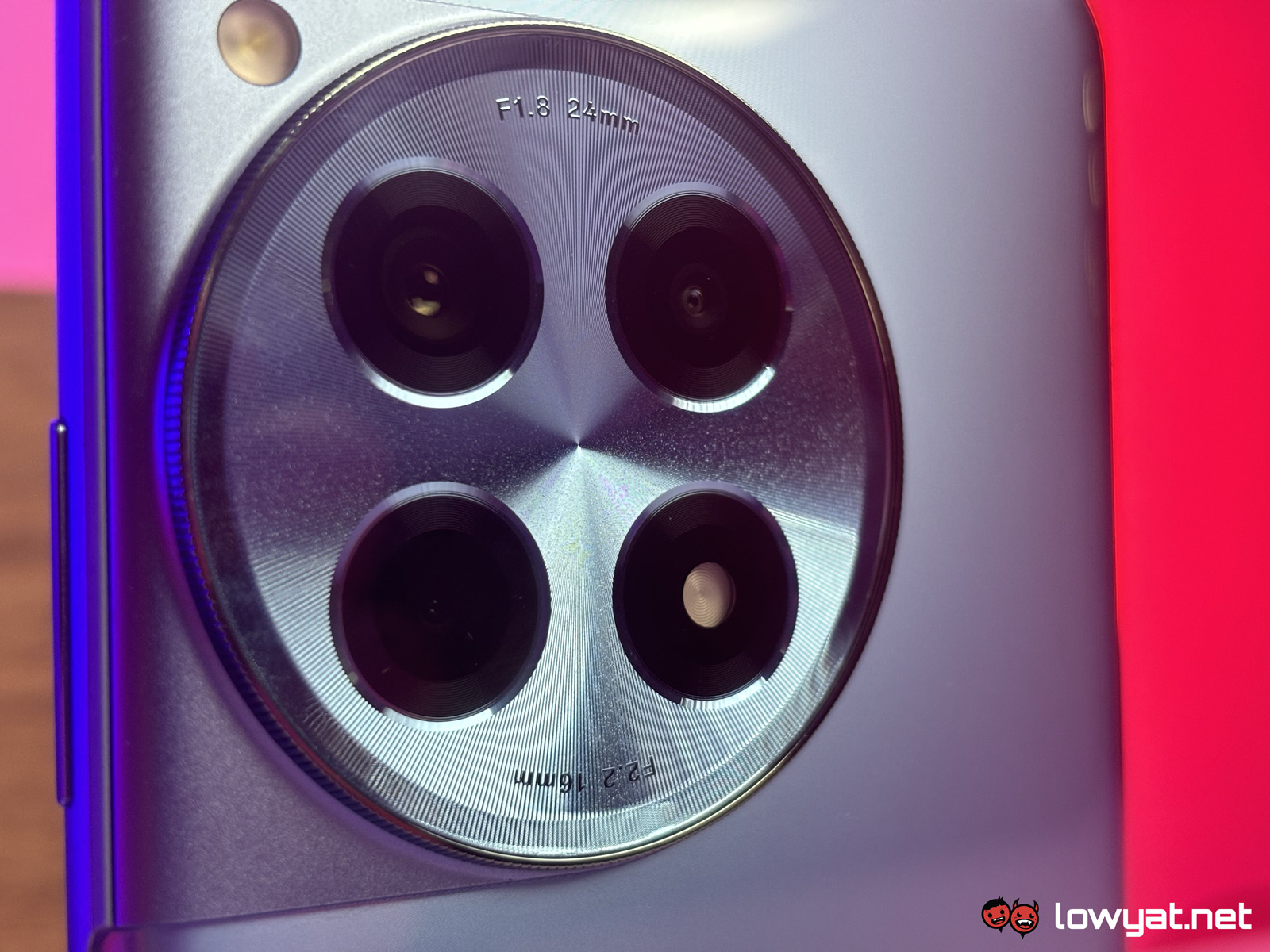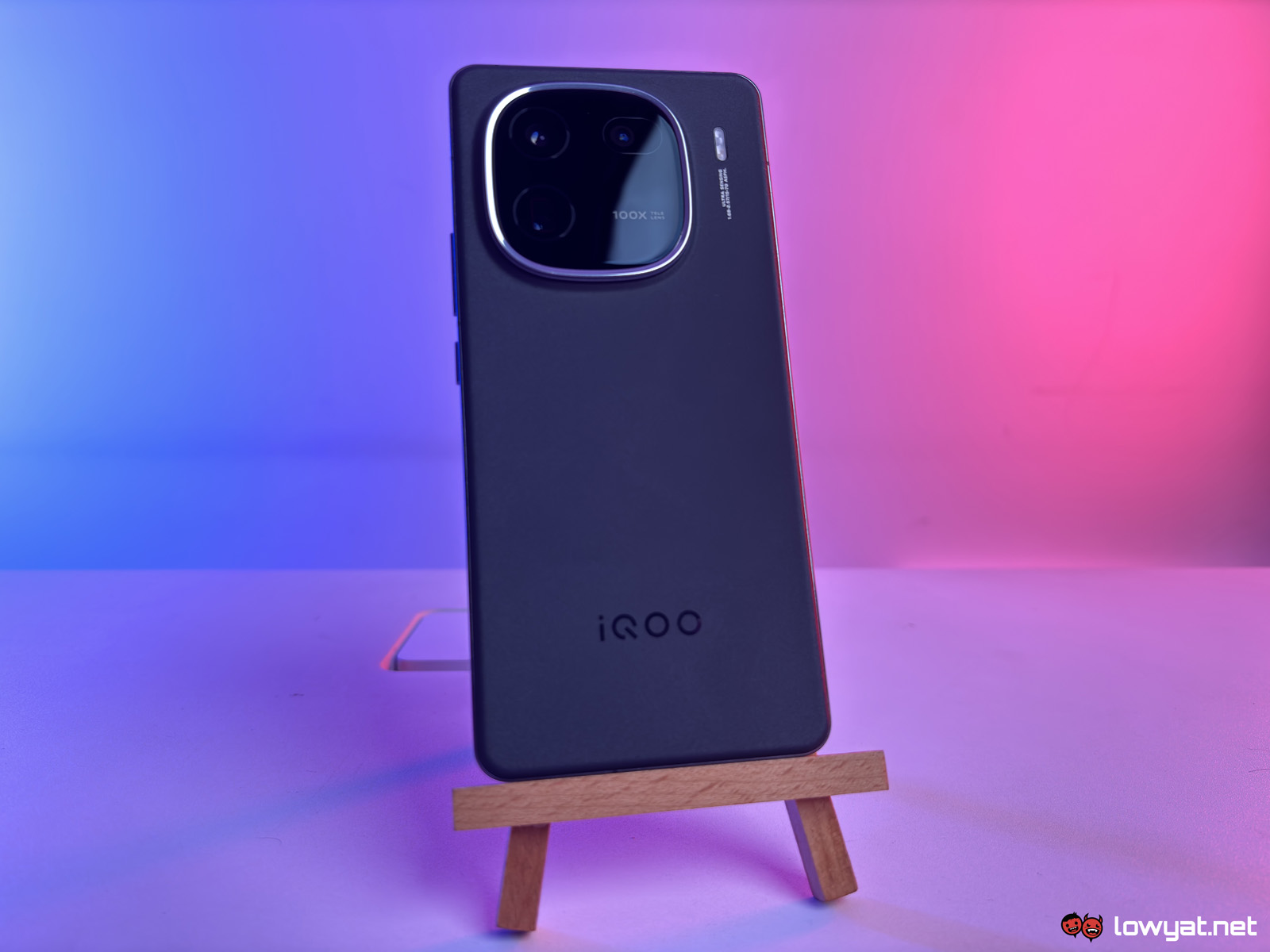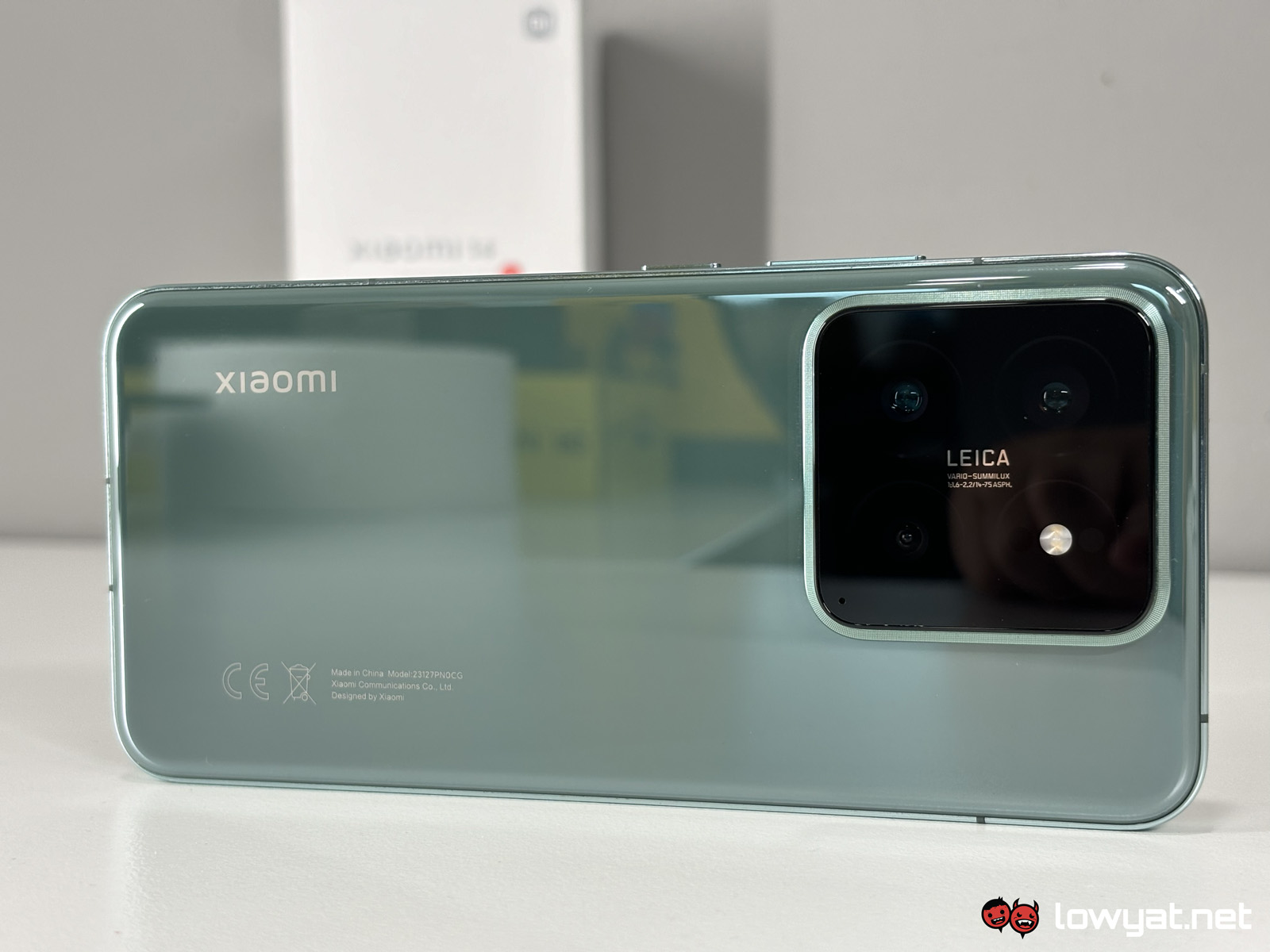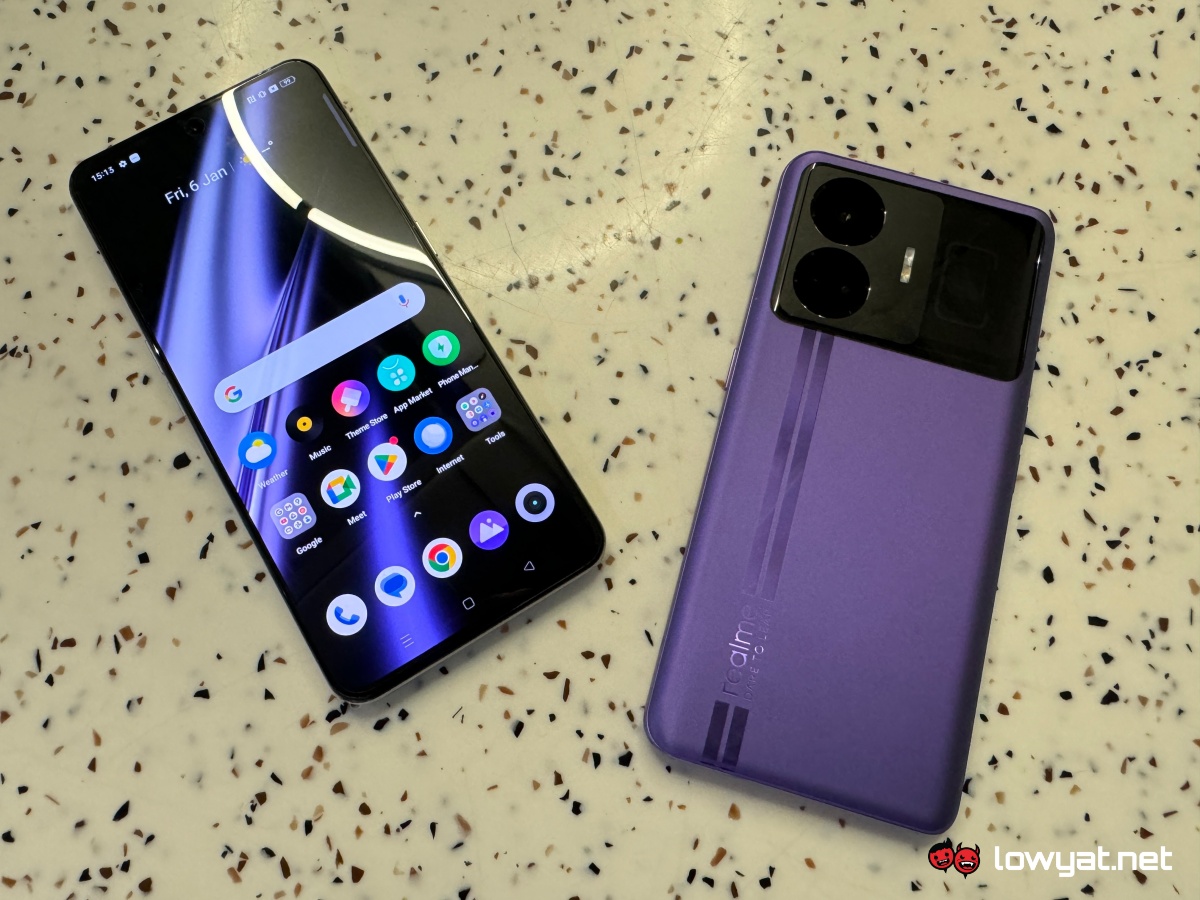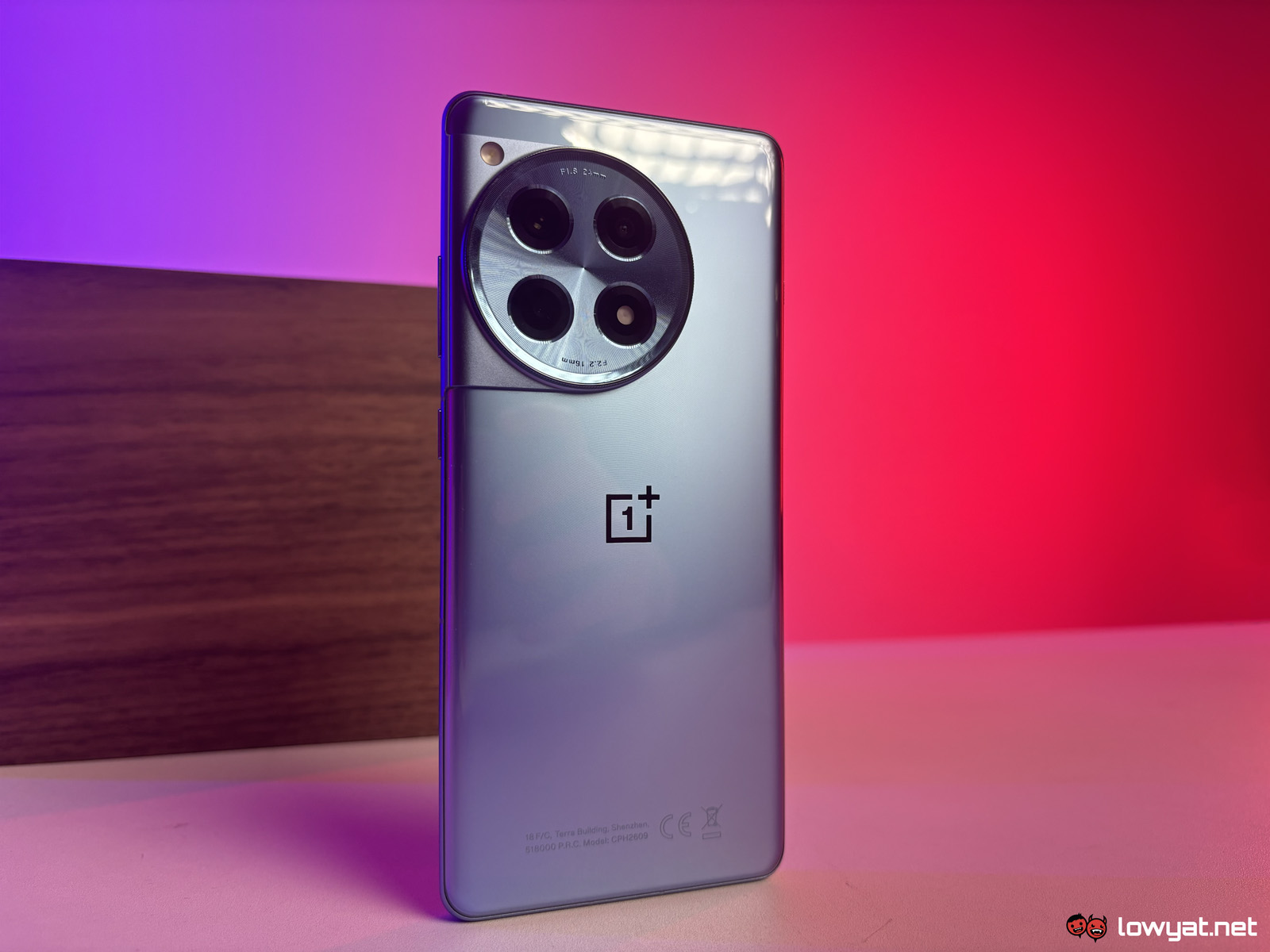Earlier this year, OnePlus announced its new flagship smartphone and alongside it was a watered-down upper mid-range phone called the 12R. While I couldn’t get my hands on the 12 this year, I did manage to try out the lower-end offering of the lineup and, no surprise here, I have some thoughts.
Specifications
The OnePlus 12R gets a 6.78-inch LTPO AMOLED display with a 120Hz refresh rate, Corning Gorilla Glass 2, and is capable of outputting 4,500 nits at peak HDR brightness and 1,600 for global brightness. Under the hood, the phone runs on last year’s flagship chipset from Qualcomm, the Snapdragon 8 Gen 2, paired with 16GB RAM and 256GB of storage.
On the imaging front, the 12R sports a 50MP main camera with OIS, an 8MP ultra-wide lens, a 2MP macro lens, and a 16MP selfie shooter. Powering it is a hefty 5,500mAh battery with support for 100W wired charging, but it lacks the wireless charging found in the 12.
For protection, it comes with an IP64 rating for water and dust resistance. As for connectivity, it supports NFC, Bluetooth 5.3, Wi-Fi 7, and 5G.
Looks & Functionality
I’ll be blunt with this part: I think it was the wrong choice for OnePlus to use a curved display for this phone, especially when the industry is slowly moving away from this unnecessary trend. As one would expect, there’s the usual image distortion at the edges and the occasional mistouch. What’s more, the display has something called Aqua Touch — which is supposed to let you use the screen even when your hands are wet — and it works relatively well except for the edges.
Putting that aside, the AMOLED display is vivid and responsive with a relatively acceptable brightness for outdoor usage, although it still can’t beat something like an iPhone 15 because, for some reason, a lot of smartphone manufacturers are focusing on increasing the brightness of displays for HDR content rather than the global brightness.
The design on the back of the 12R is barely any different from the OnePlus 11 except with new colours and ridge edges on the camera bump. While it’s still very slippery and will likely force you to put a case on it, it’s admittedly less of a fingerprint magnet — I can only assume that the grey variant is less slippery since it has a matte finish.
The under-display fingerprint sensor is surprisingly fast and accurate but that’s not what I want to highlight. OnePlus has miraculously managed a feat that only a few smartphone brands have managed to do since under-display scanners started becoming a thing, which is placing it closer to the middle of the screen instead of the very bottom. Yes, it does sound mundane, but if you’ve ever used a phone with an under-display scanner, you’ll know that it’s usually placed far too low to comfortably reach while handling it with one hand.
On the software side, the 12R runs on OxygenOS 14, which has honestly still retained its reputation of being a lightweight OS skin. There’s little to no bloatware, every animation runs fluidly, and all the basic and important shortcuts are available in the quick settings, which can’t be said for all skins. There’s also the usual alert slider on the side, which, of course, makes it a OnePlus phone.
Performance & Battery
The OnePlus 12R runs on the last-gen Snapdragon 8 Gen 2, so it’s no surprise when I say it’s no slouch despite not being the current flagship. Day-to-day tasks run as smooth as butter with no lag whatsoever.
When it comes to synthetic benchmarks, it slightly underperforms compared to the OnePlus 11 with the same chip on Geekbench, but its stability improves by a wide margin as it doesn’t thermal throttle nearly as much under a continuous heavy load. I’m not sure what the company did to achieve this, but yes, it rarely gets scolding hot.
The battery life is mighty impressive and it should be given that it does have a larger-than-average capacity. I was regularly able to use the OnePlus 12R for two days at a time on a single charge and if I really pushed it with light usage, I was still able to use it for a few hours on the third day before needing to charge it. When put through a YouTube streaming endurance test set at 25% volume and brightness, the device lasted over 21 hours, which is a pretty significant achievement in my book.
Unfortunately, the phone doesn’t come with a charger in the box, so if you don’t already have a proprietary SuperVOOC charger on hand, you’ll have to cough up quite a penny for one or settle for standard charging speeds with whatever third-party brick you have. It’s also frustrating that a phone at this price point doesn’t even come with support for basic wireless charging.
Camera
Photography-wise, the 12R comes with a relatively basic setup for something at this price point with not even telephoto lens. It’s uses a Sony IMX890 sensor, which we’ve seen in a lot of mid-range phones, and even past OnePlus flagship phones, in recent years.
There’s not a lot to complain about but there’s also nothing that would impress you. In good lighting, it takes decent photos that are mostly sharp, but some photos are just a bit out of focus with a shallow fall off. When it gets even a little bit dark out, you’ll see the photos coming out really dim and boring.
One interesting feature is the AI Eraser tool the company recently rolled out to some of its phones. Just like with Samsung’s or Google’s, this tool lets you quickly erase unwanted elements in your photo using generative AI. Photos edited using this software is nowhere near perfect, but I found that OnePlus’ implementation, which uses OPPO’s AndesGPT, works slightly better than Google’s Magic Eraser.
Camera Samples
Competition
iQOO 12
At only RM200 more, there is the iQOO 12, the brand’s current flagship smartphone. It has a 6.78-inch 1.5K LTPO AMOLED display with a 144Hz refresh rate, runs on a Qualcomm Snapdragon 8 Gen 3 chipset, and is paired with 16GB of RAM and 512GB of storage.
The phone features a 50MP main camera with OIS, a 64MP telephoto lens with 3x optical zoom and OIS, and a 50MP ultra-wide lens. Powering it is a 5,000mAh battery with support for 120W wired charging.
Xiaomi 14
If you top up an extra RM300, you can instead get Xiaomi’s 2024 flagship, the Xiaomi 14. This phone sports a smaller 6.36-inch LTPO OLED display with a 120Hz refresh rate, but it runs on the latest Snapdragon 8 Gen 3 with 12GB of RAM and 256GB for the base trim.
It is equipped with a Leica-engineered setup made up of a 50MP primary sensor with OIS, a 50MP telephoto with OIS and 3.2x optical zoom, and a 50MP ultra-wide lens. It’s powered by 4,610mAh battery with support for 90W wired and 50W wireless charging.
realme GT3
The realme GT3 is actually a whopping RM500 less expensive than the OnePlus 12R, and while it’s technically packing older hardware, it’s still a close competitor given how close the gap is despite the price difference. The mid-ranger has a 6.74-inch AMOLED screen with 144Hz refresh rate and runs on a Qualcomm Snapdragon 8 Plus Gen 1, which is less powerful than the Gen 2, but there should be a negligible difference in daily usage.
There is a triple-camera setup on the back comprised of a 50MP main sensor, an 8MP ultra-wide, and a 2MP micro lens. On the battery side, it uses a 4,600mAh cell with support for incredibly fast 240W wired charging.
Conclusion
The OnePlus 12R gets a lot of things right. It has a powerful chip, lots of RAM and storage, a bright display, great battery life, and a decent camera. But to price a mid-range phone like this in the RM3K range is a bit baffling given than some brands, like the one I’ve listed above, now have top-tier new flagships in this bracket.
It feels like OnePlus didn’t do their market research on this one or it just assumed people wouldn’t wanna pay the price difference to get a flagship over the 12R. I say if it’s only a couple of hundred bucks and you’re already paying over RM3K, it’s more worth it in the long-term to get the more advanced phone with more features. In the end, while it’s a nice, well-balanced phone overall, there’s nothing about it that stands out and makes it worth the premium.
Follow us on Instagram, Facebook, Twitter or Telegram for more updates and breaking news.


